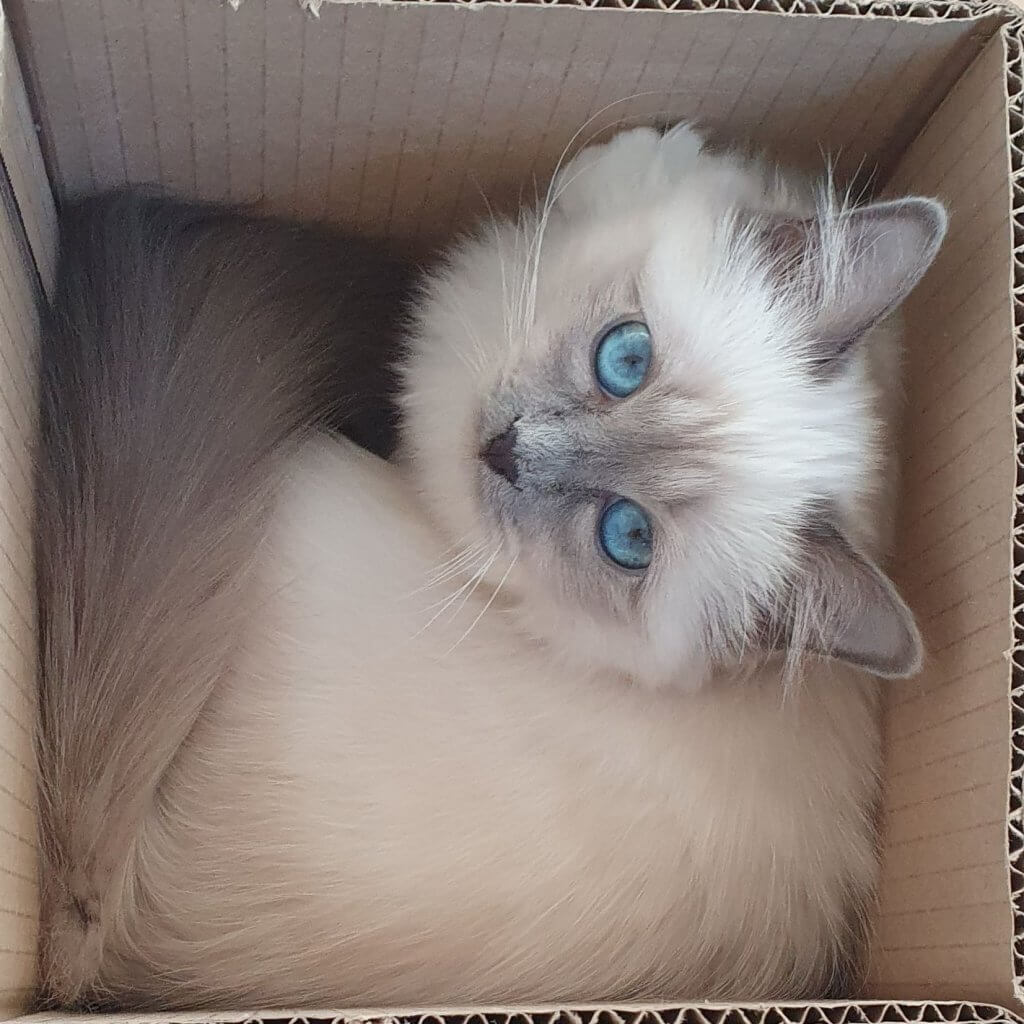The sacred cat of Burma
The breed’s name comes from the word Birmanie which is the French form of Burma, a country in South-East-Asia (today Mianmar).
There is no clear record of the origins of the breed but there are several fascinating legends about it.
Origin
Many stories agree that the Birmans were sacred cats of the temples in northern Burma providing company to the Kittah priests. According to an ancient legend, the Birmans’ coloration originates from a blue-eyed goddess, Tsun Kyan Kse (or Tsun Kiang Seth) who was the goddess of reincarnation. This story claims that the original guardian cats of the Temple of Lao Tsun had long white fur and yellow eyes. One day the temple was attacked and the main priest was injured. His loyal cat touched his body in the moment of his death and the white cat’s yellow eyes suddenly turned deep blue, just like the eyes of the goddess of the temple. Its fur’s got a golden shade and the face, legs and tail turned into the color of the Earth, except fort he tip of the paws where the cat was in contact with the priest’s body, that white part symbolizes purity. Suddenly all temple cats turned into that color and this miraculous change confused the attackers and they left the temple immediately.
Another version of the same legend claims that in the moment of the priest’s death when the cat touched him, the soul of the goddess’ spirit possessed the cat and changed its color. The paws where the spirit entered, remained white.
There are also stories that claim that these legends were just invented after the breed was created in Europe as a cross breed between Siamese and Persians.



The first Birman cats
What is known for certain – based on documented records – is that the breed first was recognized in 1925 by the Cat Club de France. The breed was named Sacre de Birmanie.
How the first cats arrived to France and how the breeding started is again unsure.
There is one among the several stories that seems to be accepted by most historians. This story claims that 2 temple cats were given to an American traveller called Vanderbuilt who shipped the cats to France. The male cat died on the way but the female arrived and has given birth to a litter. One of the kittens was named Poupee de Madalpour and it was owned by Mrs Leotardi who took her cat to an exhibition in 1926.
According to some records Poupee was bred to a Laotian Lynx cat that resembled a Siamese having very blue eyes. One of these kittens was selected to be bred further. Her name was Manou de Madalpour and she was crossed with a Siamese. Later turned out that the Laotian Lynx was actually also a Siamese as there is no specific Laotian cat, it was just called Laotian due to the current political situation between France and Siam.
Modern day Birmans
The first documented top Birman breeder, Baudoin-Crevoisier investigated years long to find out the origins of the breed but he only found even more uncertainties, for example even the existence of Mme Leotardi had to be questioned. In addition to this, most of the documentation of the breed vanished during the 2nd world war. Unfortunately also the cats almost vanished and the breed had to be rebuilt.
The two cats that survived the war and became the ancestors of nowadays Birmans were Orloff and Xenia de Kaabaa and they belonged to Baudoin-Crevoisier. These cats had to be outcrossed with long hair breeds until in 1955 the Birman breed was finally restored and registered in England by the Governing Council of the Cat Fancy (GCCF) in 1966 and in the United States by the Cat Fanciers’ Association (CFA) in 1967.
Birmans in Germany
The first Birman appeared in Germany in 1933 on record. Its name was Timour de Madalapour. The breed almost vanished during the 2nd world war also in Germany. Then the breed was re-established in the 1960s by a female cat called Nadine de Khlaramour from France whose offspring were distributed around the world.
Sources:
https://wildcatsmagazine.nl/sacred-cat-of-birma/
https://hu.wikipedia.org/wiki/Burmai_Szent_Templommacska
https://en.wikipedia.org/wiki/Birman
http://www.birman.asn.au/history.php
https://de.wikipedia.org/wiki/Birma-Katze







